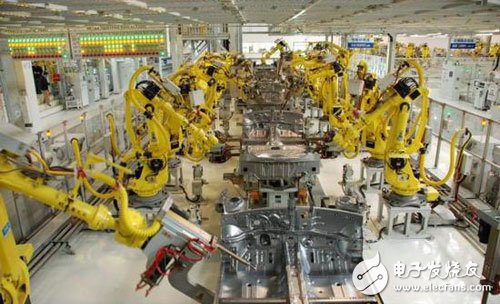At present, the six manufacturing industries of automobiles, electronics, food, chemicals, plastics and rubber, and metal products are considered to be the main fields of current industrial robots. According to the data, in the future, China's industrial robots will have an annual demand of 1 million to 2 million units, accounting for about 70% of China's industrial robot market demand. Driven by the huge market prospects, the development of industrial robots has been seeking new changes, and there are three major development trends in the future.

Market development, seeking new and changing industrial robots
With the introduction of the concept of Industry 4.0 and the introduction of the 2025 plan of China Manufacturing, China's economy has entered a new normal of development, and accelerating the development of the robot industry has become an important way to achieve new strategies. The six manufacturing industries of automobiles, electronics, food, chemicals, plastics and rubber, and metal products are considered to be the main fields of current industrial robots. According to the data, in the future, China's industrial robots will have an annual demand of 1 million to 2 million units, accounting for about 70% of China's industrial robot market demand. Driven by the huge market prospects, the development of industrial robots has been seeking new changes, and there are three major development trends in the future.
Human-machine cooperation future development direction of industrial robots
At present, industrial robots are mainly used in the automotive, electronics, metals, plastics and chemicals, food and beverage, tobacco and other industries. Its core functions are welding and brazing, in addition to handling / loading and unloading, assembly and disassembly, sealing, processing and so on. From the perspective of demand market, the Asia-Pacific region, especially China, is the core market for industrial robot applications, and the future demand will continue to grow rapidly.
However, at present, more than 90% of industrial automation operations cannot be completed by traditional robots, including mechanical tubes, stock preparation, loading and unloading, packaging, etc., which have not yet been fully automated. Human-machine cooperation robots can partially compensate for the shortcomings of traditional industrial robots and complete mechanical management. In addition, mobile robots equipped with industrial robotic arms may be one of the main directions for the next factory development.
Get rid of clumsy industrial robots and evolve to "high IQ"
The perception of robots used in the industrial field has always been on the robotic arm for simple repetitive work. But in fact, the development of industrial robots has been constantly changing, both in terms of cost and technology, becoming intelligent and becoming "high IQ."
The so-called intelligent intelligence of the robot is to make the robot "easy to apply". To achieve this, it is necessary to increase the speed of programming. Just as mobile applications need to be updated regularly, robots working on the assembly line also need program updates, and faster update means that the process of programming is easier. However, it is still a long way for industrial robots to integrate various functions into one total control system and complete the rapid update of the control program.
After the car 3C into the second largest industry of robot application
Currently, automobiles are an important driver for the development of the robot industry, but in the next 2-3 years, the electronics industry will become a driving force. In the 3C manufacturing industry, robots can maximize sustainable productivity in environments such as high temperatures and dust, which may endanger human health. This is also an important reason for the sharp increase in demand for robots in the 3C industry.
The automotive industry has always been the industry that uses the most industrial robots, but in addition to the automotive industry, China is also a major consumer and producer of home appliances and consumer electronics. In recent years, with the advent of smart upgrades, agile manufacturing, flexible manufacturing, and lean manufacturing have become the development direction of 3C home appliance manufacturers, and the characteristics of industrial robots are catering to this manufacturing trend.
In the case of this increasing demand, the automation rate of China's 3C industry is relatively low, and the density of robots on the market is far behind the developed countries. Although the current 3C industry's robot penetration rate is not enough, it also proves that the future market prospect is large, and it is a research and development direction worthy of grasping by robot companies.
At present, this kind of high-moisture lignite cannot be stored and transported for a long time, and its storage capacity is still large all over the world. High-moisture lignite has the characteristics of high moisture, flammability and explosiveness, and generally needs to use a fan coal mill for grinding. As the core component of the fan coal mill, the blow wheel plays a vital role in the operation of the entire unit.
Beater Wheel,Beater Wheel Mill,Back Plate Processing,Beater Wheel Back Plate
Shenyang Zhicheng Heavy Machinery Manufacturing Co., Ltd. , https://www.zhichengmachinery.com